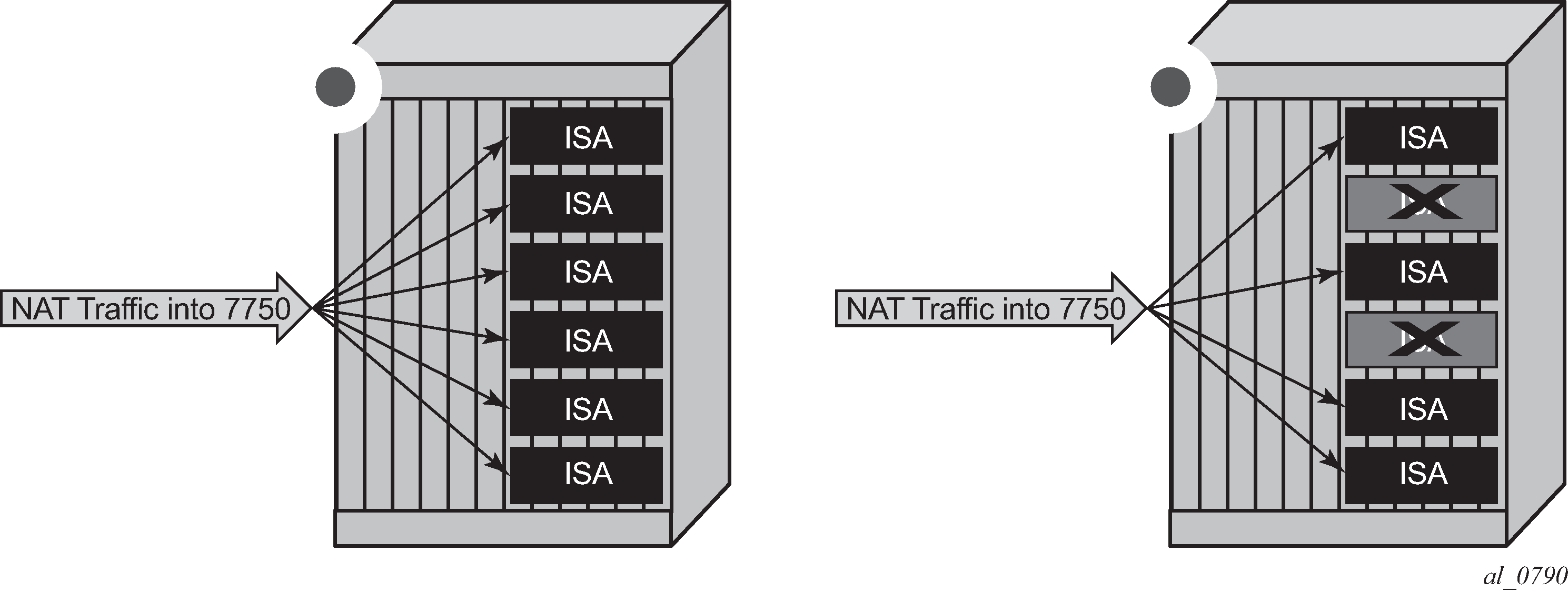NAT ISA redundancy helps protect against Integrated Service Adapter (ISA) failures. This protection mechanism relies on the CPM maintaining configuration copy of each ISA. In case that an ISA fails, the CPM restores the NAT configuration from the failed ISA to the remaining ISAs in the system. NAT configuration copy of each ISA, as maintained by CPM, is concerned with configuration of outside IP address and port forwards on each ISA. However, CPM does not maintain the state of dynamically created translations on each ISA. This causes interruption in traffic until the translation are re-initiated by the devices behind the NAT.
Two modes of operation are supported:
Active-Standby
In this mode of operation, any number of standby ISAs can be allocated for protection purposes. When there are no failures in the router, standby ISAs are idle, in a state ready to accept traffic from failed ISA. Mapping between the failed ISA and the standby ISA is always 1:1. This means that one standby ISA entirely replaces one failed ISA. In this respect, NAT bandwidth from the failed ISA is reserved and restored upon failure. This model is shown in Figure: Active-Standby intra-chassis redundancy model.
Figure: Active-Standby intra-chassis redundancy model
Active-Active
In this mode all ISAs in the system are active. When an ISA fails, its load is distributed across the remaining active ISA. In this mode of operation there is no bandwidth reservation across active ISA. Each ISA can operate at full speed at any time. However, memory resources necessary to setup new translations from the failed ISAs are reserved. The reserved resources are:
subscribers (inside IPv4 addresses for LSN44, IPv6 prefixes for DS-Lite/NAT64 and L2-Aware subscriber)
outside IPv4 addresses
outside port-ranges
By reserving memory resources it can be assured that failed traffic can be recovered by remaining ISAs, potentially with some bandwidth reduction in case that remaining ISAs operated at full or close to full speed before the failure occurred. Active-active ISA redundancy model is shown in Figure: Active-Active intra-chassis redundancy model.

In case of an ISA failure, the member-id of the member ISA that failed is contained in the FREE log. This info is used to find the corresponding MAP log which also contains the member-id field.
In case of RADIUS logging, CPM summarization trap is generated (because RADIUS log is sent from the ISA – which is failed).